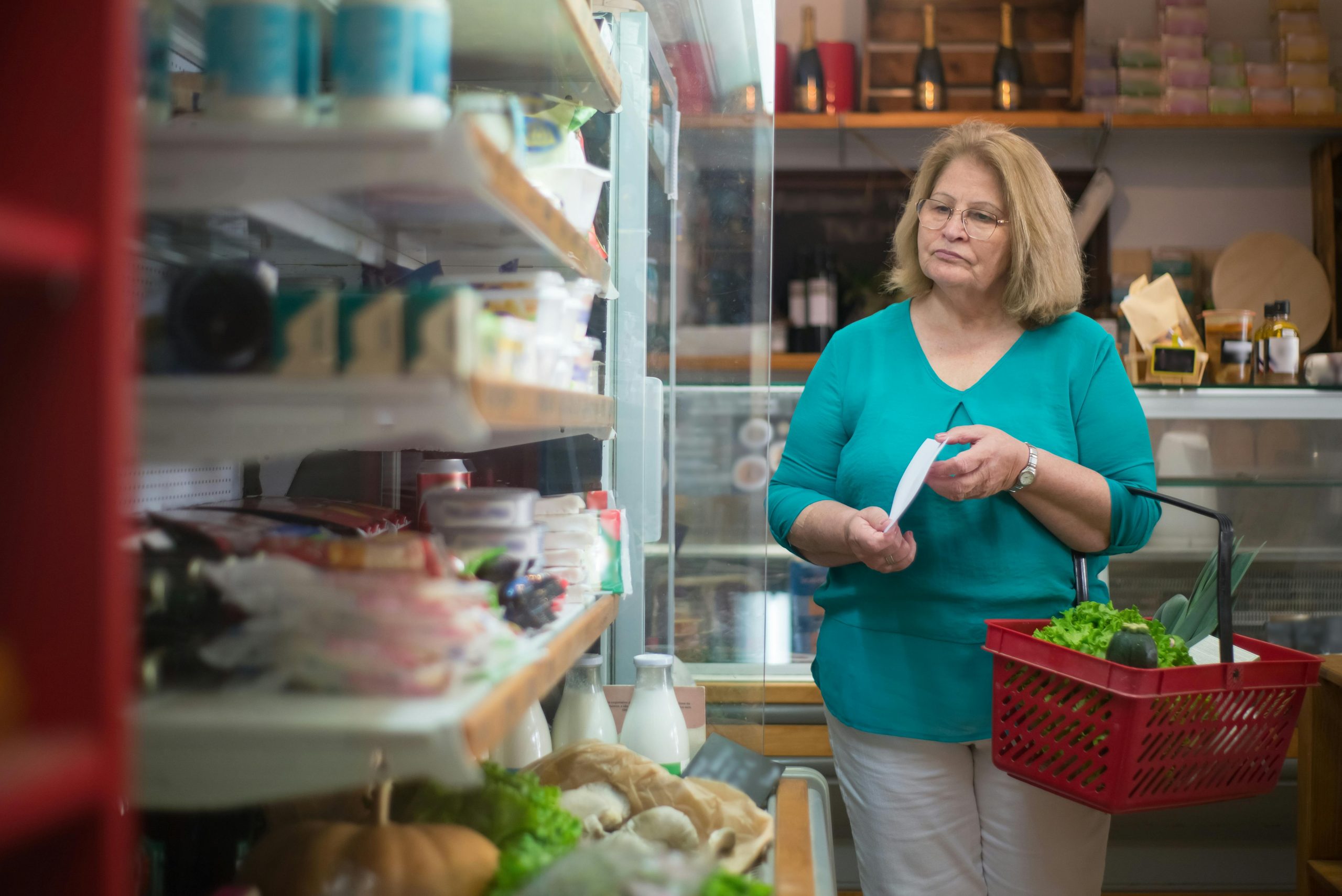Eating healthy doesn’t have to break the bank. With smart shopping strategies and thoughtful meal planning, you can build a nutritious, budget-friendly grocery list that keeps your body fueled without draining your wallet. Whether you’re feeding a family or just yourself, this guide will show you how to stock up on wholesome foods that deliver the nutrients you need at prices you can afford.
Let’s explore how to build a healthy grocery list, tips for stretching your food budget, and sample lists to make your next trip to the store easier.
Why a Healthy Grocery List Matters
A well-planned grocery list is more than just a tool for staying on budget—it’s essential for ensuring you and your family eat balanced, nutritious meals. By focusing on whole foods and avoiding processed or convenience items, you can eat better while still sticking to a tight budget.
Making a healthy grocery list helps you:
- Avoid impulse purchases.
- Reduce food waste.
- Ensure you have balanced, nutrient-dense foods on hand.
- Stick to your financial goals.
How to Build a Budget-Friendly Healthy Grocery List
Focus on Whole Foods
Whole foods like vegetables, fruits, legumes, whole grains, and lean proteins provide more nutrients and are generally more cost-effective than pre-packaged or processed items. Here’s why:
- Vegetables and fruits provide essential vitamins, minerals, and fiber.
- Whole grains like oats, quinoa, and brown rice are filling and provide lasting energy.
- Lean proteins like eggs, beans, and chicken keep you full and support muscle health.
Stick to Simple, Inexpensive Staples
Certain foods are both cheap and nutritious. Stocking up on these versatile staples can help you create a variety of healthy meals without overspending. Here’s a breakdown of some budget-friendly items to keep on your list:
- Beans and legumes: Affordable and packed with protein and fiber.
- Rice and pasta: Inexpensive grains that serve as the base for many meals.
- Frozen vegetables: Often cheaper than fresh, but just as nutritious.
- Eggs: A cheap source of protein that can be used in multiple ways.
Prioritize Seasonal and Frozen Produce
Fresh produce can get expensive, especially when it’s out of season. Instead of paying premium prices for items that aren’t in their peak growing period, opt for seasonal fruits and vegetables, or choose frozen options, which are often more affordable and retain their nutrients. For example:
- In-season apples or winter squash in fall and winter.
- Frozen broccoli or spinach when fresh vegetables are out of budget.
Shopping Smart: Tips to Stretch Your Budget
Make a Plan and Stick to It
Planning meals ahead of time allows you to make a grocery list based on the ingredients you actually need, helping you avoid unnecessary purchases. A meal plan also ensures you’re making the most of what you buy and prevents food waste. Try creating a weekly meal plan that uses overlapping ingredients.
Buy in Bulk (When it Makes Sense)
Buying in bulk can save you money on items you use frequently. Staples like oats, rice, beans, and pasta can be purchased in larger quantities and stored for future use. However, only buy in bulk if you have the storage space and if you’re confident you’ll use the item before it goes bad.
Stick to Store Brands
Many store brands offer the same quality as name brands but at a lower cost. For items like canned goods, grains, and frozen vegetables, choosing the store brand can save you a significant amount of money without sacrificing quality.
Avoid Pre-Packaged and Convenience Foods
While pre-chopped vegetables or pre-cooked meals might save you time, they usually cost more than their whole counterparts. Doing the prep work yourself may take extra effort, but it will significantly reduce your grocery bill.
Sample Budget Healthy Grocery List

Here’s a basic grocery list that focuses on affordable, nutrient-dense foods. This list includes versatile ingredients that can be used in a variety of healthy meals.
Pantry Staples
- Brown rice (2 lbs) – A nutritious, fiber-rich grain.
- Whole-wheat pasta (2 lbs) – A healthy, filling carb source.
- Dried lentils or beans (1 lb each) – Packed with protein and fiber.
- Canned chickpeas (2 cans) – Great for salads, soups, and stews.
- Canned tomatoes (2 cans) – Essential for sauces and soups.
- Rolled oats (1 lb) – A cheap, healthy breakfast option.
- Peanut butter (16 oz) – A good source of healthy fats and protein.
Produce (Fresh or Frozen)
- Carrots (1 lb) – Affordable, long-lasting, and full of nutrients.
- Sweet potatoes (2 lbs) – A great source of fiber and vitamin A.
- Spinach (frozen) – Packed with iron and easy to use in smoothies or cooked dishes.
- Apples (3 lbs) – A cheap, healthy snack option.
- Bananas (6) – Great for snacks or smoothies.
- Onions (1 lb) – An essential base for many meals.
- Garlic (1 bulb) – Adds flavor to dishes at a low cost.
- Broccoli (frozen or fresh) – Nutritious and versatile for stir-fries or roasting.
Protein
- Eggs (1 dozen) – Inexpensive and versatile.
- Chicken breasts (2 lbs) – A lean protein source that can be used in multiple dishes.
- Canned tuna (2 cans) – A budget-friendly protein option for salads or sandwiches.
- Tofu (1 block) – An affordable, plant-based protein source.
Dairy/Non-Dairy
- Milk (1 gallon or plant-based alternative) – Essential for breakfast or smoothies.
- Plain yogurt (32 oz) – A healthy option for breakfast or snacks.
- Cheese (8 oz) – Adds flavor and protein to meals.
Miscellaneous
- Olive oil (16 oz) – A healthy fat for cooking and dressings.
- Spices (salt, pepper, paprika) – Essential for flavoring your meals.
Healthy Meal Ideas Using Budget-Friendly Groceries
Now that you have a list of affordable, healthy groceries, here are some simple meal ideas you can make using these ingredients:
Breakfast Ideas
- Overnight Oats: Mix oats, milk, and a spoonful of peanut butter. Top with bananas or apples for a nutritious breakfast.
- Veggie Omelette: Use eggs, onions, and spinach to create a protein-packed omelette. Add a side of toast or sweet potatoes for extra energy.
- Smoothie: Blend frozen spinach, bananas, peanut butter, and milk for a quick, nutrient-dense breakfast.
Lunch Ideas
- Lentil Soup: Cook lentils with onions, garlic, and canned tomatoes for a filling, hearty soup.
- Chicken and Veggie Stir-Fry: Use frozen broccoli, carrots, and chicken breasts, stir-fried with olive oil and spices. Serve over brown rice.
- Tuna Salad: Combine canned tuna with a spoonful of yogurt, chopped onions, and spices. Serve over a bed of spinach or on whole-wheat bread.
Dinner Ideas
- Chickpea and Sweet Potato Curry: Sauté onions, garlic, and canned chickpeas with diced sweet potatoes and canned tomatoes. Season with paprika, salt, and pepper. Serve with rice.
- Pasta with Marinara Sauce: Cook whole-wheat pasta and top with a homemade sauce made from canned tomatoes, garlic, and olive oil. Add a side of spinach salad.
- Egg Fried Rice: Sauté leftover rice with scrambled eggs, onions, and frozen broccoli for a quick, balanced meal.
Snack Ideas
- Yogurt with Fruit: Top plain yogurt with sliced bananas or apples for a healthy snack.
- Peanut Butter and Apples: A simple, protein-packed snack.
- Hard-Boiled Eggs: Prepare a batch of hard-boiled eggs to snack on throughout the week.
Conclusion: Building a Healthy Grocery List on a Budget
Eating healthy on a budget is achievable with a little planning and smart shopping. By focusing on whole, unprocessed foods, buying seasonal and frozen produce, and stocking up on pantry staples, you can fill your kitchen with nutritious ingredients without overspending.
Remember to make a meal plan, stick to your list, and take advantage of sales and bulk-buying opportunities. With these strategies, you’ll be able to enjoy delicious, healthful meals that support both your body and your wallet.
Meta Title: Budget Healthy Grocery List: Affordable and Nutritious Meal Planning Ideas
Meta Description: Learn how to create a healthy grocery list on a budget with affordable ingredients. Discover shopping tips, meal ideas, and practical ways to eat well without overspending.


